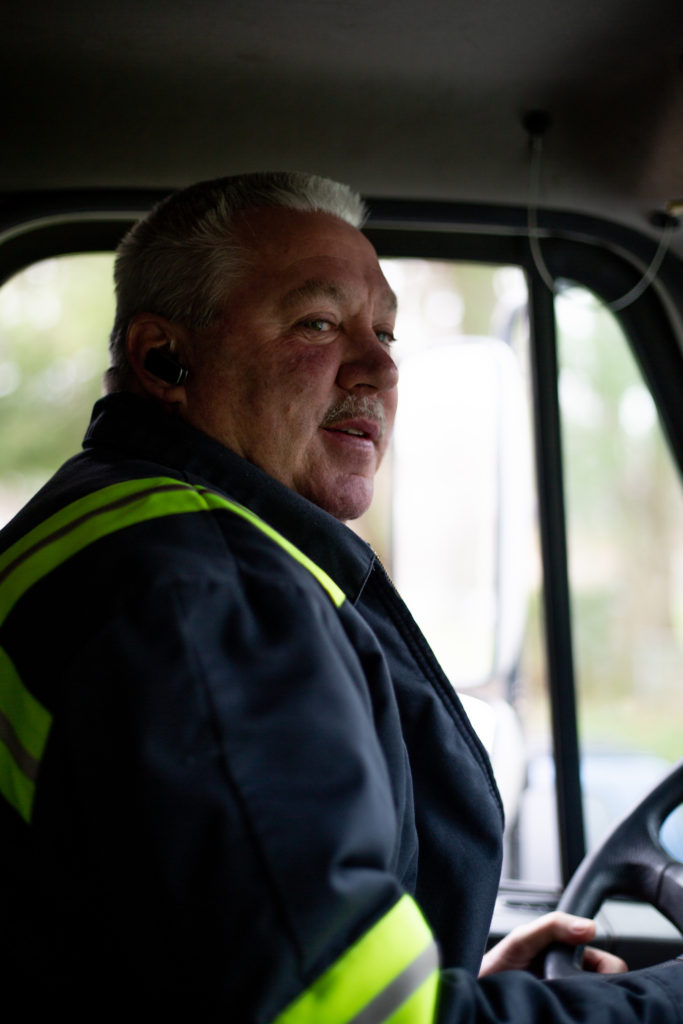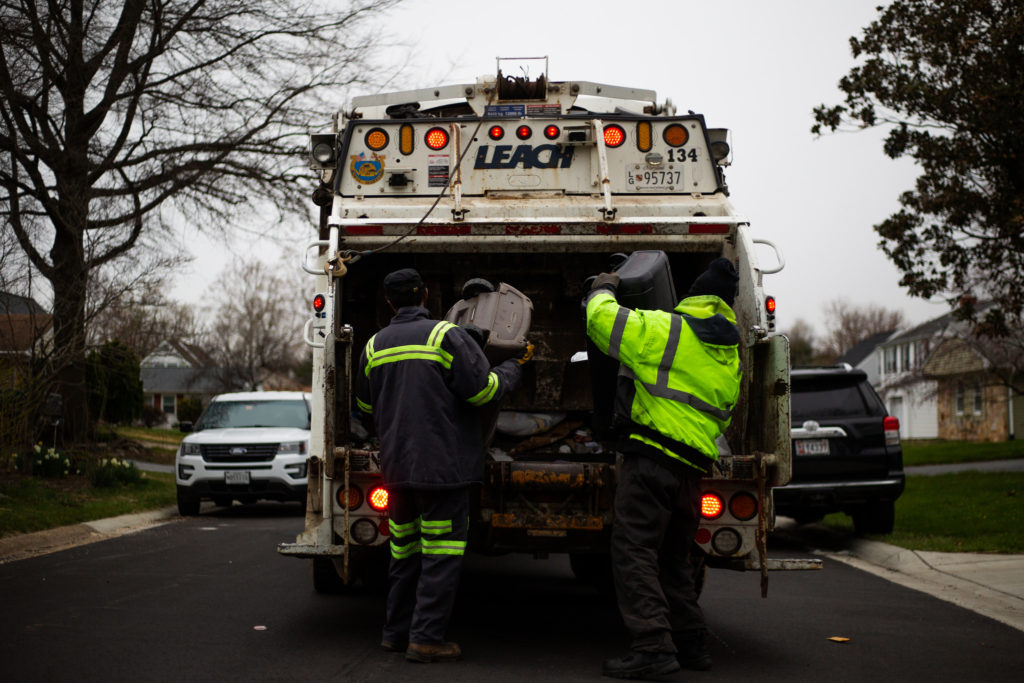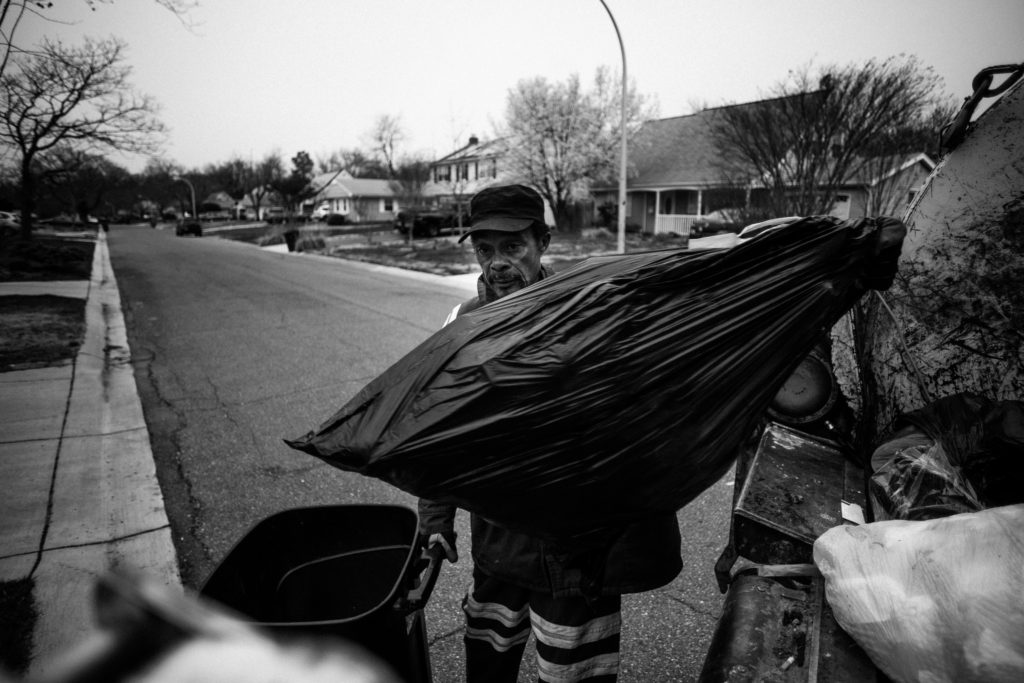Maryland’s garbage workers in harm’s way
By Aaron Rosa
ANNAPOLIS, Maryland — Jimmy Elben is almost 10 times more likely to die at work than most of the commuters who pass his truck every day.

Elben doesn’t strap into a jet, or heave nets of fish onto a pitching deck at sea, but when he starts his work week, he may as well, since his profession is one of the top five most dangerous jobs in America.
He’s a garbage man.
Waste collection workers in Maryland face a daunting task: gathering tons of solid waste every day in the face of unpredictable weather, distracted drivers and inherently dangerous equipment.
For Elben’s garbage crew, the difference between life and death can lie in a quick tap of the truck’s horn.
“It’s gotten worse, everyone is in a hurry, 25 years ago you didn’t see people on their phones while driving,” said Elben, a 28-year veteran garbage truck driver for the City of Bowie.
Elben’s eyes scan the road, noting changes in traffic, monitoring the haulers with a mounted rear-facing camera — his hand poised to sound the horn at the first sign of oncoming vehicles.

Roadway incidents involving land vehicles have jumped more than 52 percent for waste collectors in the U.S. between 2011 and 2016, according to data from the U.S. Bureau of Labor Statistics.
“Your biggest fear as a collector is distracted or impatient drivers,” said Melvin Thompson, 75, a supervisor for the City of Bowie Public Works Department and veteran waste collector.
And the danger is not just limited to motor vehicle collisions.

An OSHA report details a worker in Aspen Hill, Maryland, being crushed to death after his arm was caught in a truck compactor.
In the last year a worker in Bowie was struck in the head when a piece of building material was ejected from his truck’s compactor, said Thompson. The resulting injury left him unable to return to full health and he subsequently left his job.
Used needles — improperly disposed of, and insidiously difficult to see — pose a common danger to haulers, Elben told Capital News Service.

“A hauler last year picked up a bag and got stuck by a needle,” said Elben. Thompson confirmed the story and added that the worker had to get medically examined afterward.
Changing seasons bring new hazards — shorter daylight hours in the winter make for dangerous collection routes, and as people prepare their swimming pools for the summer months, discarded pool chemicals mix and combust in the truck, Elben said.
Summer months can also mean more trash as students are off school and spend more time at home.
“The trash is always heavier in the summer than in the winter,” said Elben.

Musculoskeletal injuries are common among garbage workers. Shoulders and backs give out frequently, and such injuries account for almost 13 percent of all injuries in 2016, according to Bureau of Labor Statistics data.
High rates of injury contribute to a low retirement rate among haulers, and a high turnover rate for new hires, Elben said.
Haulers occupy the entry level in the hierarchy of the solid waste collection world.
Once a worker earns a Class C license, they are eligible to work as a driver. However, Elben explained, The physically strenuous hauler positions attract younger workers, Elben explained, but fail to keep them.
Maryland garbage workers between the ages of 45 and 54 have had the highest rate of injury among all ages in the profession over the past 10 years, according to U.S. Bureau of Labor Statistics data.
Ten years of data collected by the bureau show that despite increasing regulations protecting workers, the first four hours of a sanitation worker’s shift are consistently the most dangerous.
“Monday mornings are the most dangerous,” said Elben. “People get up late for work after the weekend and are in a hurry to get someplace.”
On a recent Monday morning, Elben honks his horn just seconds before a car passes the truck — he explains that though side streets are somewhat safer due to less volume, certain roads are more dangerous in the morning as high schoolers use them as a shortcut to drive to class.
People late for work, students late for class and distracted driving has made Monday morning the most dangerous time of the week for waste collection workers, said Elben — and the labor agency data supports him. On average over the past 10 years, Monday and Tuesday have had the highest injury rates, according to federal data.
State law requires motorists to change lanes when able while approaching emergency vehicles, but until this year waste collection and utility vehicles had been left out.
A bill passed this year by the Maryland General Assembly will require drivers to change lanes, when able, approaching any vehicle flashing an amber light, a measure supported by the waste collection industry.
Gov. Larry Hogan signed Senate bill 445 into law on May 8.
Last year, in Laurel, Maryland, Marcus Colbert, 30, was killed when a passing SUV sideswiped a parked car and pinned him against his garbage truck. An OSHA investigation noted that Colbert had been wearing all required reflective clothing and was not impaired by headphones or noise-cancelling devices.
The accident happened at 8:54 a.m. on Jan. 23, 2017 — a Monday morning.
The Maryland State’s Attorney declined to file charges against the driver of the SUV stating “there was insufficient evidence to support any violations to state transportation or criminal laws,” according to a press release by the City of Laurel.
“If we had a law in place that requires drivers to pull over for trash trucks, just like for emergency vehicles, Marcus might still be alive,” Laurel City Council President Michael Leszcz said earlier this year in written testimony to the Maryland House Environment and Transportation Committee.
“Where possibly could you have been going, that you could not have waited two minutes,” Ralph Brent, Colbert’s father, himself a veteran of the Laurel Sanitation Department, told lawmakers. “Now I have no son when I go home.”
Jimmy Elben shook his head when recalling Marcus Colbert’s death.

You must be logged in to post a comment.